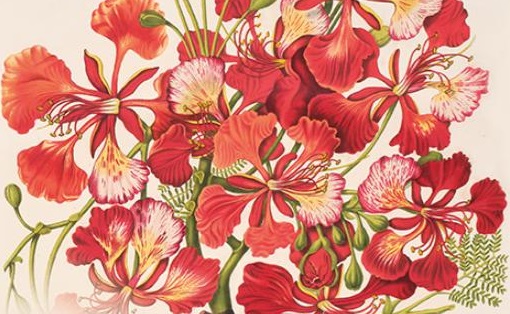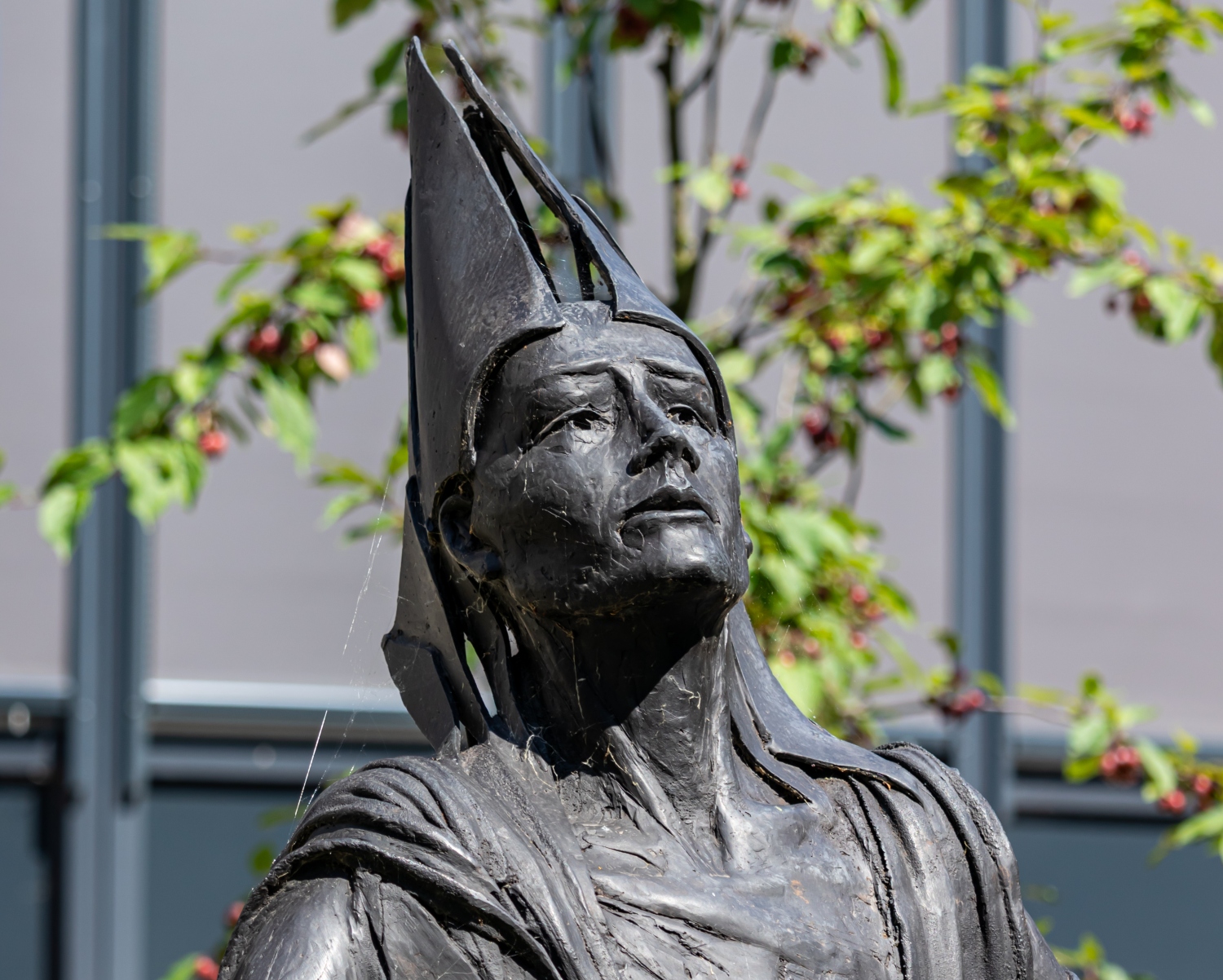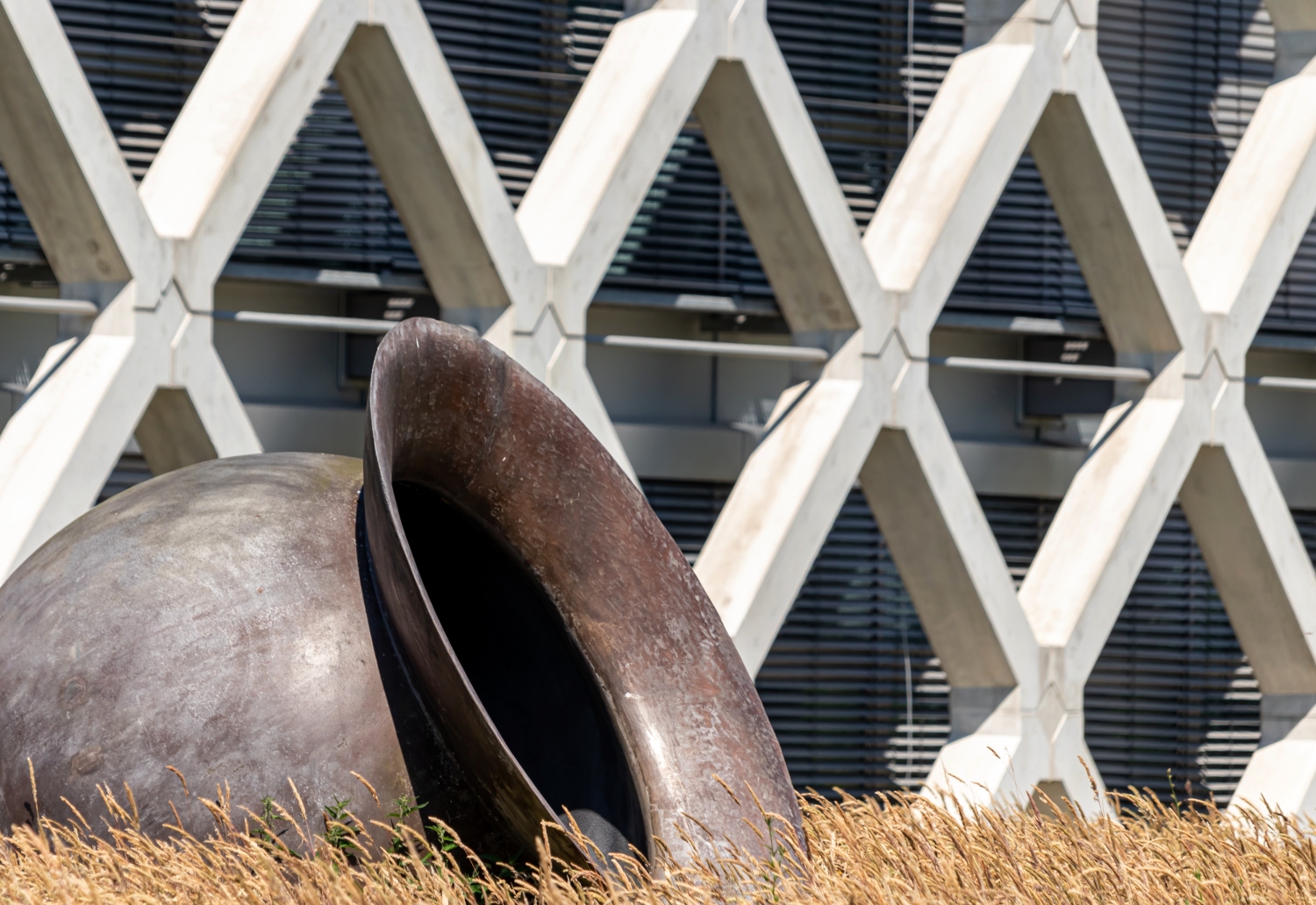You are likely to pass at least one of the many art pieces on Wageningen campus. What is it? Who made it? What does it convey? Student editor and amateur artist Maurice Schoo discusses striking works of art with WUR’s Art and Heritage conservator Joke Webbink.
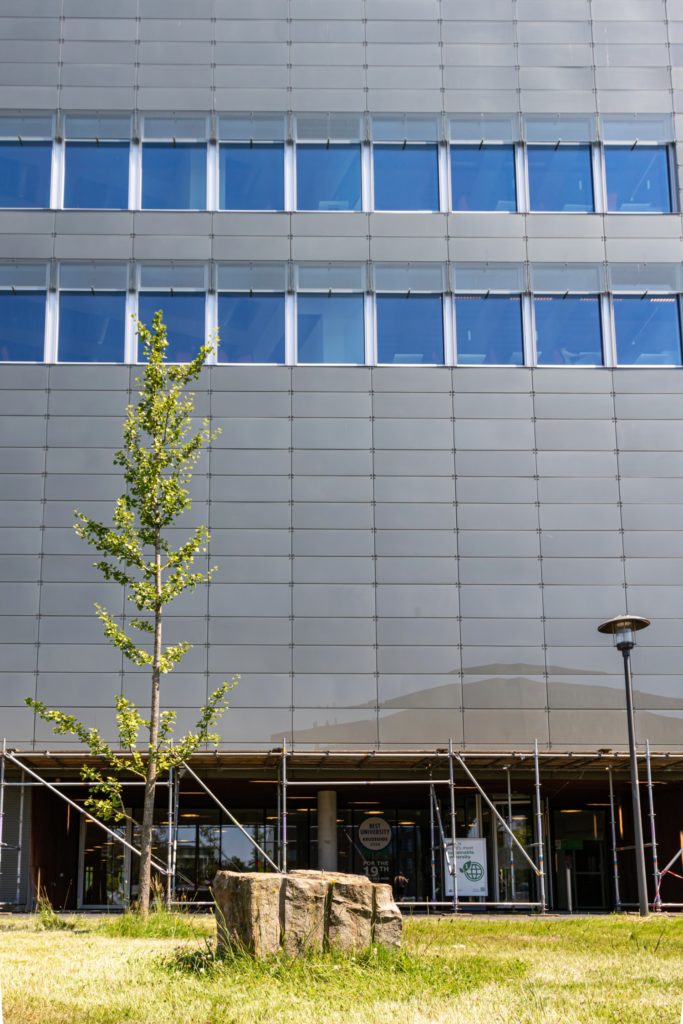
Have you ever wondered what the truth of our existence is? Take a walk to Orion along the pond. There, you will find a sculpture made by internationally renowned artist herman de vries (1931, and yes, all lowercase) with the title ‘veritas existentiae’ or ‘truth of existence’ from 2015. ‘The piece consists of a stone carved from a quarry near Venice, with the words ‘veritas existentiae’ in gilded letters’, Webbink explains. ‘The title refers to the work of the French philosopher Pierre Gassendi, who claims that the truth of existence is hidden in things themselves. In his work. In his work, de vries frequently refers to nature and natural processes based on this philosophy.’ He writes his name with only lowercase letters because he believes in the equality of all natural phenomena.
de vries worked for the Institute for Applied Biology Research in Nature (Dutch acronym: ITBON), the predecessor to Wageningen Environmental Research, from 1952 to 1956. ‘He began his career as an artist in 1953. His work is exhibited in the Kröller-Müller Museum as well as in the Rijksmuseum. There, you will find a piece that is on loan from WUR: Random Objectivation v67-36. It is a lengthy carving made up of stacked wooden strips.’

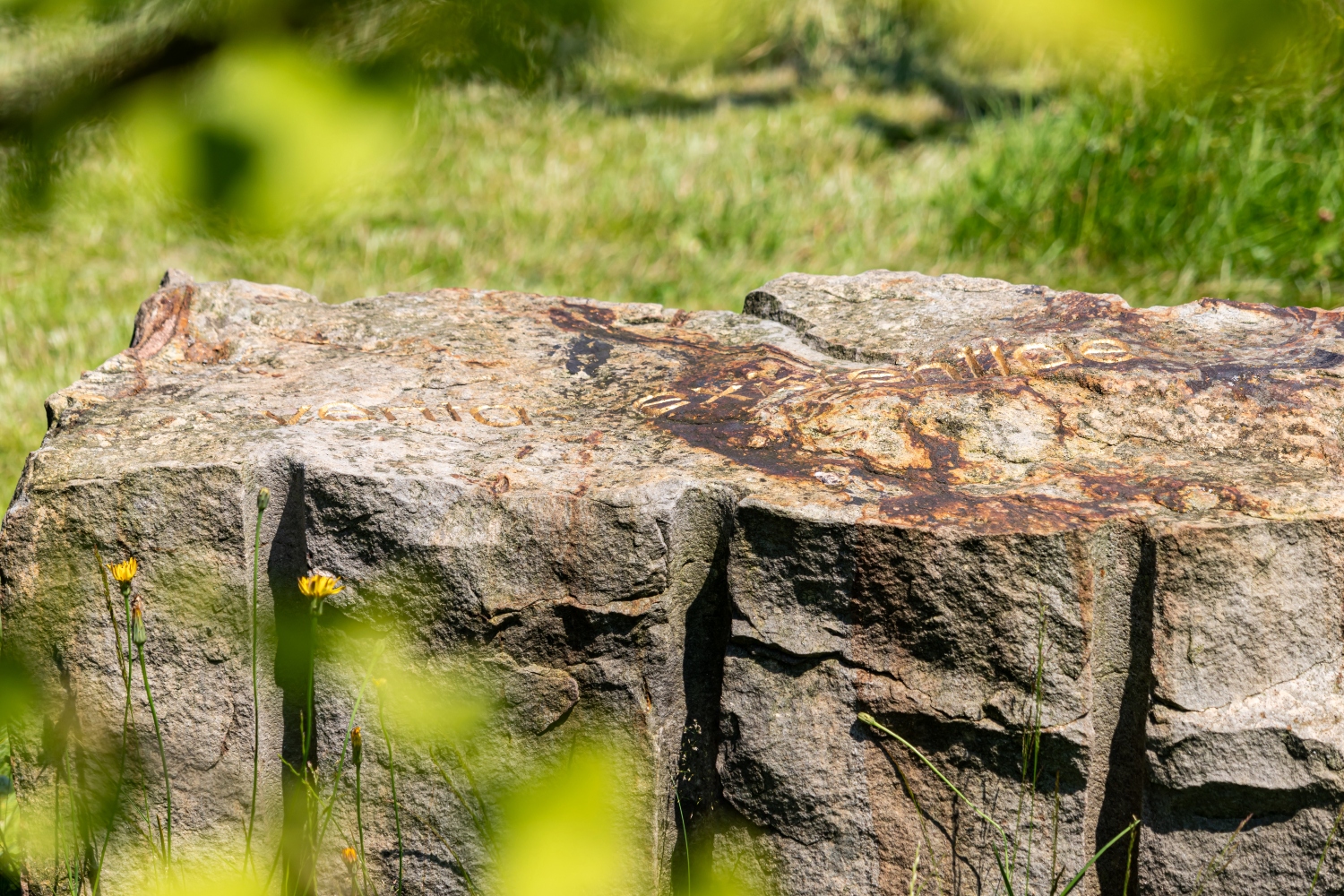 Veritas existentiae by herman de vries (detail). Photo Joaquina
Veritas existentiae by herman de vries (detail). Photo Joaquina 